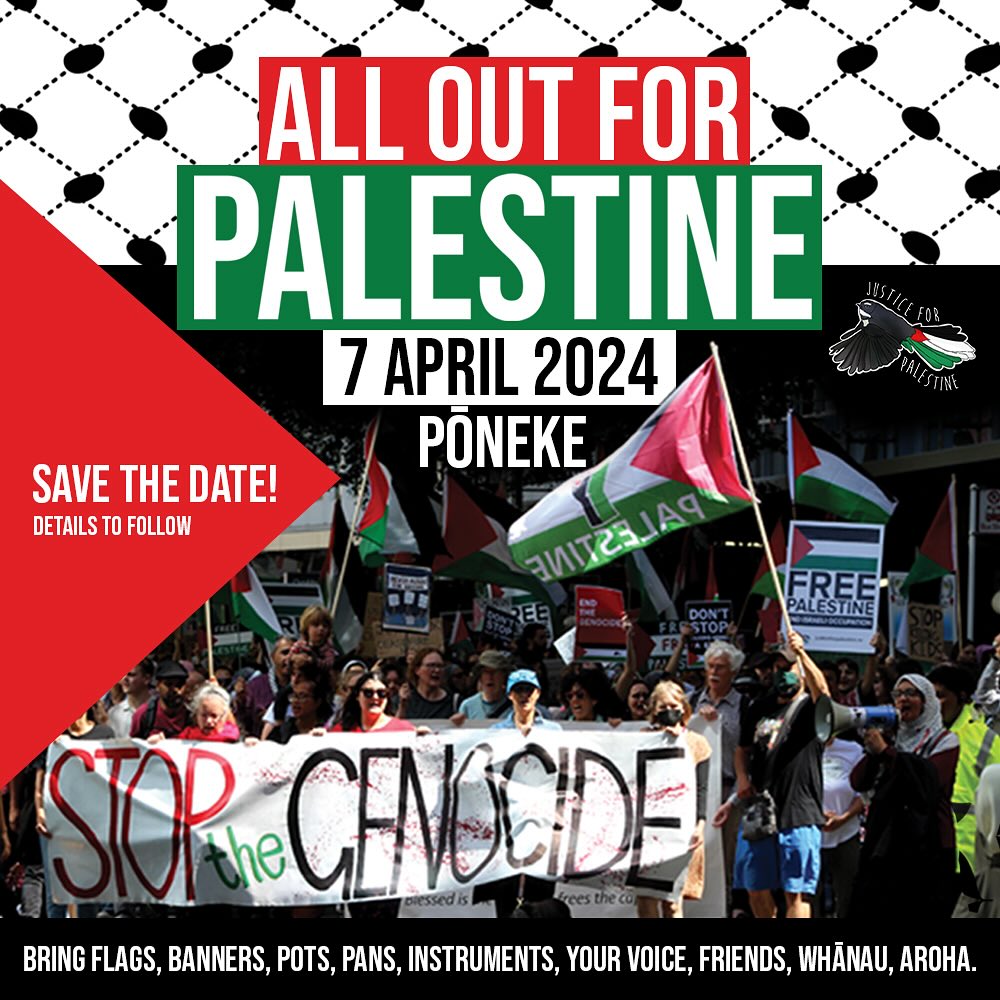The mass of ordinary people who can change society. The ruling class, the capitalist media, and academia all stress workers’ powerlessness, and these ideas often filter through to people who want to change the world. The emphasis can get put on heroic individuals, spectacular action designed to ‘shock’ the masses out of their alleged passivity, or a focus on stunts for media attention. But, for society to change, we need to draw in the greatest numbers of people into activity possible. This isn’t just because we have ‘strength in numbers’, although that matters. It’s because, historically, the involvement of ordinary people in their masses has led to wins for our side.
If there is a clear lead and purpose, people will march in their thousands. In 2010 a 40,000-strong march in Auckland against mining in the national parks prompted a humiliating back-down from the government. In 2004, some 50,000 people marched on Parliament to protest plans to legislate crown ownership of the foreshore and seabed.
The 1981 Springbok tour
Thirty-six years ago New Zealand was sharply divided on whether the Springbok rugby team should be hosted here. While museum items today recall the moment protestors managed to infiltrate the pitch in Hamilton, and violence from the police, it’s worth remembering that these protests were part of a mass movement. Mass demonstrations erupted nationwide to stop the Springboks from touring. Some 150,000 people participated in over 200 demonstrations. This was the largest civil disturbance since the 1951 Waterfront lockout.
To be sure, the demonstrations didn’t stop the tour in 1981, but the mass actions showed the scale of solidarity with those fighting against apartheid in South Africa to a degree that deterred political leaders from ever again permitting subsequent Springbok tours until after the fall of apartheid. The anti-tour movement also prompted a new layer of people to see the connections between racism abroad and anti-Māori racism in Aotearoa.
The power of the collective
We need mass actions for lasting ongoing change. But they also serve another purpose: they show power of the collective. Being part of a thousands-strong march changes your sense of potential collective power. People are marching together for one purpose, and taking over and occupying the city streets usually reserved for commerce. Russian revolutionary Leon Trotsky understood that “the greater is the mass drawn into the movement, the higher its self-confidence rises, all the more self-confident will that mass movement be and all the more resolutely will it be capable of marching forward, however modest may be the initial slogans of struggle.”
Struggle changes consciousness
Demonstrators’ views of themselves change in unexpected ways in this newfound strength. Struggle changes consciousness. Through the very process of struggle demonstrators are able to see bonds and links of solidarity with one another. In their newfound strength, protestors political horizons expand. Māori – who played a key role in anti-Tour protests – began to emphasise the racism that they experience in New Zealand and push for mana motuhake (Māori self-determination).
Lessons for today
In Aotearoa today there is no mass movement that we can look to. But that doesn’t mean that we should simply give up on the idea. As John Berger put it, mass demonstrations are above all “rehearsals for revolution: not strategic or even tactical ones, but rehearsals of revolutionary awareness”.
In building campaigns in the here and now, we should be trying to unite around slogans that can involve the largest numbers of people. “Stop the tour” was the simple catch phrase in 1981 that got hundred and thousands active in their workplaces, in their unions, and onto the streets. We should ask ourselves not what is the most radical in the abstract but what will get the biggest numbers of people active.
We need the understanding and patience to have an orientation towards getting ordinary people taking direct again. To be sure, having an orientation towards mass action doesn’t mean that we sit around waiting for a mass movement to come; a small militant minority can make a significant impact and keep an issue alive. But, if we’re serious about changing the world we need a strategic orientation to the masses.









